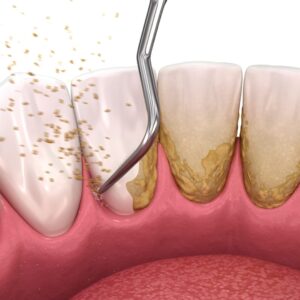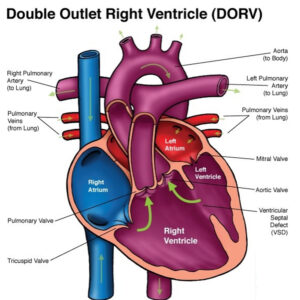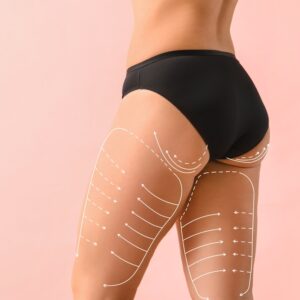Description
Familiarity with treatment
A vertical thigh lift is a surgical procedure that aims to reshape and tighten the thighs by removing excess skin and fat. It is typically performed on individuals who have sagging or loose skin in the thigh area, often due to weight loss or aging. Here is a general explanation of the procedure based on the information from the search results:
Patient Evaluation: Before undergoing a vertical thigh lift, a thorough evaluation is conducted by a qualified plastic surgeon. The surgeon will assess the patient’s overall health, medical history, and specific concerns related to the thigh area. They will also discuss the patient’s goals and expectations from the surgery.
Anesthesia: The procedure is usually performed under general anesthesia, ensuring that the patient is comfortable and pain-free during the surgery. The anesthesia options will be discussed with the patient beforehand, and the surgeon will recommend the most suitable option.
Incision Placement: The incision pattern for a vertical thigh lift typically starts from the groin area and extends downward along the inner thigh. The length and placement of the incision may vary depending on the extent of correction needed and the surgeon’s technique. The incision is designed to be discreet and hidden within natural creases or clothing lines.
Excess Skin and Fat Removal: Once the incision is made, the surgeon will remove excess skin and fat from the inner thigh area. The amount of tissue removed will depend on the patient’s specific needs and desired outcome. Liposuction may also be performed to further contour the thighs and improve overall results.
Tissue Tightening and Closure: After removing the excess skin and fat, the remaining skin is carefully tightened and repositioned to create a smoother and more toned appearance. The surgeon will use sutures to close the incisions, ensuring proper wound healing.
Postoperative Care: Following the surgery, the patient will be monitored in a recovery area. The healthcare team will provide instructions on postoperative care, including wound care, pain management, and activity restrictions. It is important for the patient to follow these instructions to promote proper healing and minimize the risk of complications.
Recovery and Results: The recovery period for a vertical thigh lift can vary depending on the individual and the extent of the procedure. Patients may experience swelling, bruising, and discomfort, which can be managed with prescribed medications and proper care. It is important to attend follow-up appointments with the surgeon to monitor the healing process. Over time, as the swelling subsides and the incisions heal, the patient will notice improved thigh contour and tighter skin.
Who is it suitable for?
A vertical thigh lift is suitable for individuals who have excess skin and fat extending all the way around the thigh, including the upper, middle, and lower sections. It is often performed on patients who have experienced significant weight loss or have loose skin due to aging. Here are some key points about the suitability of a vertical thigh lift based on the information from the search results:
Excess Skin: A vertical thigh lift is suitable for individuals with excess skin in the entire thigh area, including the inner, middle, and outer thighs. It addresses sagging or loose skin that may be present after weight loss or due to aging.
Desire for Comprehensive Correction: This type of thigh lift provides greater correction and improvement to the entire thigh area compared to other types of thigh lifts, such as mini or inner thigh lifts. It aims to tone and tighten the upper, middle, and lower thigh areas.
Incision Size: A vertical thigh lift requires a larger incision compared to other types of thigh lifts. The incision typically starts from the inner groin and extends downward along the inner thigh. The size of the incision is based on the amount of correction needed.
Scarring: A vertical thigh lift does produce a significant scar; however, the scar is located on the inside of the thigh where it is less noticeable. The incision is designed to be discreet and hidden within natural creases or clothing lines.
Patient Evaluation: The suitability for a vertical thigh lift is determined through a thorough evaluation by a qualified plastic surgeon. The surgeon will assess the patient’s overall health, medical history, and specific concerns related to the thigh area. They will also discuss the patient’s goals and expectations from the surgery.
Who is it not suitable for?
While a vertical thigh lift can be a suitable option for many individuals with excess skin and fat in the thigh area, there may be certain cases where it is not recommended. It’s important to consult with a qualified plastic surgeon to determine the most appropriate treatment option for your specific situation. Here are some instances where a vertical thigh lift may not be suitable based on the information from the search results:
Insufficient Excess Skin: If an individual has minimal excess skin in the thigh area, a vertical thigh lift may not be necessary or recommended. In such cases, less invasive procedures like liposuction or non-surgical treatments may be more appropriate to address localized fat deposits.
Poor General Health: Individuals with significant underlying medical conditions or poor overall health may not be suitable candidates for a major surgical procedure like a vertical thigh lift. It’s important to have a thorough evaluation of your health to ensure your safety during and after the surgery.
Unrealistic Expectations: If an individual has unrealistic expectations about the outcomes of a vertical thigh lift, the surgery may not be suitable. It’s important to have a clear understanding of what can be achieved through the procedure and discuss your goals and expectations with the plastic surgeon.
Pregnancy or Future Weight Loss: It is generally recommended to postpone a vertical thigh lift if an individual is planning to become pregnant or intends to lose a significant amount of weight in the future. Pregnancy and substantial weight loss can cause changes in the thigh area, potentially compromising the results of the surgery.
Active Infections or Skin Conditions: Individuals with active infections or certain skin conditions in the thigh area may not be suitable for a vertical thigh lift until the condition is resolved. This is to minimize the risk of complications and ensure proper wound healing.
Smoking or Nicotine Use: Smoking and nicotine use can impair healing and increase the risk of complications. It is generally recommended to quit smoking and avoid nicotine products before and after surgery. Individuals who are unable or unwilling to quit smoking may not be suitable candidates for a vertical thigh lift.
Advantages
Based on the information from the search results, a vertical thigh lift may not be suitable for everyone. Here are some instances where a vertical thigh lift may not be recommended:
Minimal Excess Skin: If an individual has minimal excess skin in the thigh area, a vertical thigh lift may not be necessary or recommended. Less invasive procedures like liposuction or non-surgical treatments may be more appropriate in such cases.
Poor General Health: Individuals with significant underlying medical conditions or poor overall health may not be suitable candidates for a major surgical procedure like a vertical thigh lift. A thorough evaluation of the patient’s health is necessary to ensure their safety during and after the surgery.
Unrealistic Expectations: If an individual has unrealistic expectations about the outcomes of a vertical thigh lift, the surgery may not be suitable. It’s important to have a clear understanding of what can be achieved through the procedure and discuss goals and expectations with the plastic surgeon.
Pregnancy or Future Weight Loss: It is generally recommended to postpone a vertical thigh lift if an individual is planning to become pregnant or intends to lose a significant amount of weight in the future. Pregnancy and substantial weight loss can cause changes in the thigh area, potentially compromising the results of the surgery.
Active Infections or Skin Conditions: Individuals with active infections or certain skin conditions in the thigh area may not be suitable for a vertical thigh lift until the condition is resolved. This is to minimize the risk of complications and ensure proper wound healing.
Smoking or Nicotine Use: Smoking and nicotine use can impair healing and increase the risk of complications. It is generally recommended to quit smoking and avoid nicotine products before and after surgery. Individuals who are unable or unwilling to quit smoking may not be suitable candidates for a vertical thigh lift.
Complications
Complications associated with a vertical thigh lift can occur, although they are generally not life-threatening. Here are some insights from the search results regarding complications:
Frequency of Complications: Complications can occur in a significant percentage of patients undergoing a thigh lift procedure. The reported rates of complications vary, ranging from 42.72% to 74% of patients experiencing some form of complication 1 2 3.
Wound Dehiscence: One of the most frequent complications reported is wound dehiscence, which refers to the separation of the surgical incision. This complication was observed in approximately 18.34% of patients 1.
Scar Formation: A vertical thigh lift involves a larger incision that extends down the inner thigh. As a result, extensive and visible scars along the thigh can be a potential complication. However, patients who have undergone massive weight loss may be willing to accept these scars to address their concerns.
Other Potential Complications: While less common, other complications that may arise include poor wound healing, scar enlargement, distortion of the labia majora (in the case of a horizontal procedure), and the risk of infection 4.
preoperative care
Preoperative care is an essential part of the surgical process that aims to prepare patients for surgery and optimize their outcomes. Here are some key points about preoperative care based on the information from the search results:
Assessment and Evaluation: Preoperative care begins with a thorough assessment of the patient’s medical history, physical examination, and specific evaluations. This includes evaluating the patient’s overall health, identifying any pre-existing medical conditions, and assessing the risks associated with the surgery.
Patient Education: During the preoperative period, patients are provided with information about their surgical procedure, expectations, and postoperative care. This education helps patients understand the process, manage their expectations, and actively participate in their own care.
Preoperative Testing: Depending on the type of surgery and the patient’s medical condition, various preoperative tests and clinical assessments may be conducted. These tests can include blood work, imaging studies, electrocardiograms (ECGs), and other specific evaluations to ensure the patient is in optimal condition for surgery.
Optimization of Health: Preoperative care may involve optimizing the patient’s health before surgery. This can include managing chronic conditions, adjusting medications, and addressing any specific concerns that may impact the surgical outcome.
Consent and Documentation: Obtaining informed consent from the patient is an important aspect of preoperative care. The consent process involves explaining the surgical procedure, potential risks and benefits, and alternative treatment options. It is also important to ensure that all necessary consent forms and documentation are completed and properly recorded.
Preoperative Instructions: Patients are provided with specific instructions to follow before surgery, such as fasting guidelines, medication restrictions, and preparation of the surgical site. These instructions are crucial for ensuring a safe and successful surgical procedure.
Psychosocial Support: Preoperative care also involves addressing the patient’s emotional and psychological well-being. This may include providing support, addressing anxiety or fears, and involving the patient’s support system in the process.
Postoperative care
Postoperative care is a critical phase following surgery that focuses on the patient’s recovery and well-being. Here are some key points about postoperative care based on the information from the search results:
Monitoring and Observation: After surgery, patients are closely monitored in a recovery area or a dedicated post-anesthesia care unit (PACU). Vital signs, such as heart rate, blood pressure, and oxygen levels, are monitored to ensure stability and detect any complications.
Pain Management: Effective pain management is an important aspect of postoperative care. Patients may receive medications to alleviate pain and discomfort, and the healthcare team will regularly assess pain levels and adjust the treatment plan accordingly.
Wound Care: Proper care of surgical incisions and wounds is crucial for preventing infections and promoting healing. The healthcare team will provide instructions on how to clean and dress the wound, as well as any specific care requirements.
Mobility and Activity: Depending on the type of surgery, patients may be encouraged to start moving and engaging in gentle activities as soon as possible. Early mobilization helps prevent complications such as blood clots, promotes circulation, and aids in the recovery process.
Diet and Nutrition: In the initial postoperative period, patients may be placed on a restricted or modified diet. The healthcare team will provide guidance on dietary restrictions, hydration, and gradually reintroducing regular food intake.
Medication and Follow-up: Patients will receive instructions regarding any prescribed medications, such as antibiotics or pain relievers, and how to take them. They will also be informed about follow-up appointments with the surgeon or healthcare team to assess the progress of their recovery.
Emotional and Psychological Support: Recovering from surgery can be a challenging time emotionally. The healthcare team may provide resources and support to help patients cope with any emotional or psychological issues that may arise during the recovery process.
Complication Monitoring: The healthcare team will closely monitor patients for any signs of complications, such as infection, bleeding, or adverse reactions to medications. Patients are encouraged to promptly report any concerns or unusual symptoms to their healthcare provider.






Reviews
There are no reviews yet.